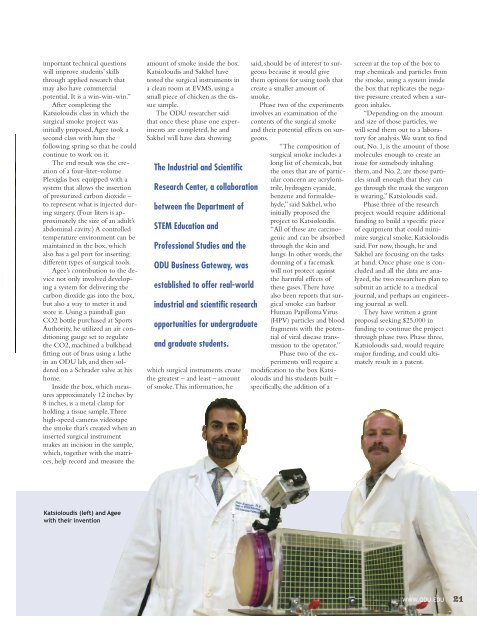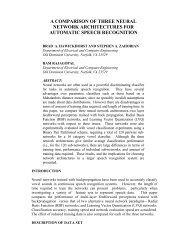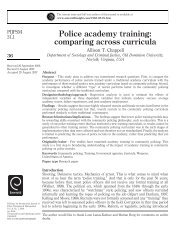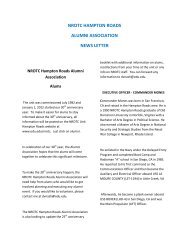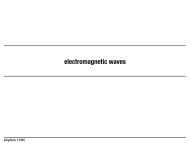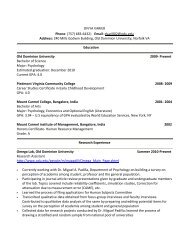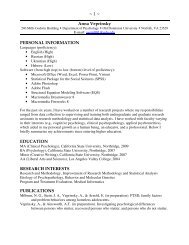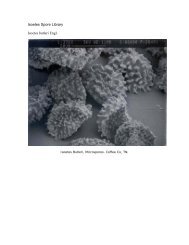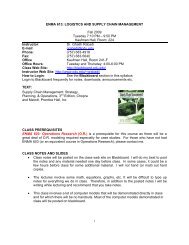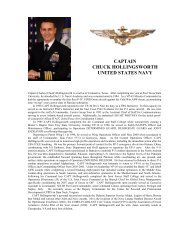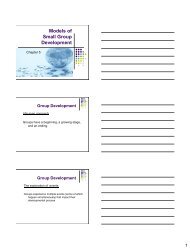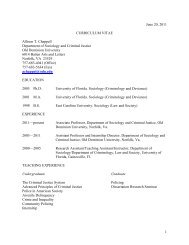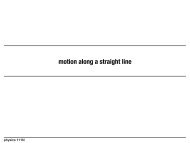Payoff Season for Fifth- Year Seniors - Old Dominion University
Payoff Season for Fifth- Year Seniors - Old Dominion University
Payoff Season for Fifth- Year Seniors - Old Dominion University
Create successful ePaper yourself
Turn your PDF publications into a flip-book with our unique Google optimized e-Paper software.
important technical questions<br />
will improve students’ skills<br />
through applied research that<br />
may also have commercial<br />
potential. It is a win-win-win.”<br />
After completing the<br />
Katsioloudis class in which the<br />
surgical smoke project was<br />
initially proposed, Agee took a<br />
second class with him the<br />
following spring so that he could<br />
continue to work on it.<br />
The end result was the creation<br />
of a four-liter-volume<br />
Plexiglas box equipped with a<br />
system that allows the insertion<br />
of pressurized carbon dioxide –<br />
to represent what is injected during<br />
surgery. (Four liters is approximately<br />
the size of an adult’s<br />
abdominal cavity.) A controlled<br />
temperature environment can be<br />
maintained in the box, which<br />
also has a gel port <strong>for</strong> inserting<br />
different types of surgical tools.<br />
Agee’s contribution to the device<br />
not only involved developing<br />
a system <strong>for</strong> delivering the<br />
carbon dioxide gas into the box,<br />
but also a way to meter it and<br />
store it. Using a paintball gun<br />
CO2 bottle purchased at Sports<br />
Authority, he utilized an air conditioning<br />
gauge set to regulate<br />
the CO2, machined a bulkhead<br />
fitting out of brass using a lathe<br />
in an ODU lab, and then soldered<br />
on a Schrader valve at his<br />
home.<br />
Inside the box, which measures<br />
approximately 12 inches by<br />
8 inches, is a metal clamp <strong>for</strong><br />
holding a tissue sample. Three<br />
high-speed cameras videotape<br />
the smoke that’s created when an<br />
inserted surgical instrument<br />
makes an incision in the sample,<br />
which, together with the matrices,<br />
help record and measure the<br />
Katsioloudis (left) and Agee<br />
with their invention<br />
amount of smoke inside the box.<br />
Katsioloudis and Sakhel have<br />
tested the surgical instruments in<br />
a clean room at EVMS, using a<br />
small piece of chicken as the tissue<br />
sample.<br />
The ODU researcher said<br />
that once these phase one experiments<br />
are completed, he and<br />
Sakhel will have data showing<br />
The Industrial and Scientific<br />
Research Center, a collaboration<br />
between the Department of<br />
STEM Education and<br />
Professional Studies and the<br />
ODU Business Gateway, was<br />
established to offer real-world<br />
industrial and scientific research<br />
opportunities <strong>for</strong> undergraduate<br />
and graduate students.<br />
which surgical instruments create<br />
the greatest – and least – amount<br />
of smoke. This in<strong>for</strong>mation, he<br />
said, should be of interest to surgeons<br />
because it would give<br />
them options <strong>for</strong> using tools that<br />
create a smaller amount of<br />
smoke.<br />
Phase two of the experiments<br />
involves an examination of the<br />
contents of the surgical smoke<br />
and their potential effects on surgeons.<br />
“The composition of<br />
surgical smoke includes a<br />
long list of chemicals, but<br />
the ones that are of particular<br />
concern are acrylonitrile,<br />
hydrogen cyanide,<br />
benzene and <strong>for</strong>maldehyde,”<br />
said Sakhel, who<br />
initially proposed the<br />
project to Katsioloudis.<br />
“All of these are carcinogenic<br />
and can be absorbed<br />
through the skin and<br />
lungs. In other words, the<br />
donning of a facemask<br />
will not protect against<br />
the harmful effects of<br />
these gases. There have<br />
also been reports that surgical<br />
smoke can harbor<br />
Human Papilloma Virus<br />
(HPV) particles and blood<br />
fragments with the potential<br />
of viral disease transmission<br />
to the operator.”<br />
Phase two of the experiments<br />
will require a<br />
modification to the box Katsioloudis<br />
and his students built –<br />
specifically, the addition of a<br />
screen at the top of the box to<br />
trap chemicals and particles from<br />
the smoke, using a system inside<br />
the box that replicates the negative<br />
pressure created when a surgeon<br />
inhales.<br />
“Depending on the amount<br />
and size of those particles, we<br />
will send them out to a laboratory<br />
<strong>for</strong> analysis. We want to find<br />
out, No. 1, is the amount of those<br />
molecules enough to create an<br />
issue <strong>for</strong> somebody inhaling<br />
them, and No. 2, are those particles<br />
small enough that they can<br />
go through the mask the surgeon<br />
is wearing,” Katsioloudis said.<br />
Phase three of the research<br />
project would require additional<br />
funding to build a specific piece<br />
of equipment that could minimize<br />
surgical smoke, Katsioloudis<br />
said. For now, though, he and<br />
Sakhel are focusing on the tasks<br />
at hand. Once phase one is concluded<br />
and all the data are analyzed,<br />
the two researchers plan to<br />
submit an article to a medical<br />
journal, and perhaps an engineering<br />
journal as well.<br />
They have written a grant<br />
proposal seeking $25,000 in<br />
funding to continue the project<br />
through phase two. Phase three,<br />
Katsioloudis said, would require<br />
major funding, and could ultimately<br />
result in a patent.<br />
WWW.ODU.EDU 21


